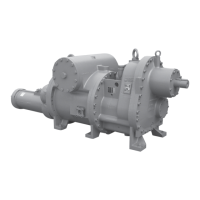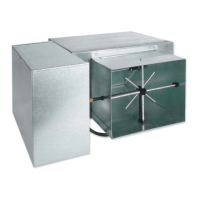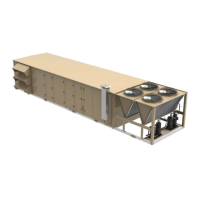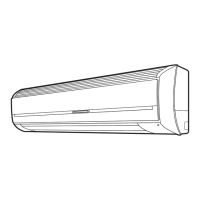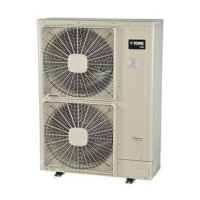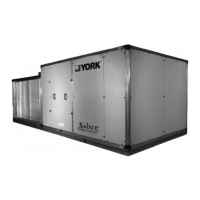JOHNSON CONTROLS
53
SECTION 4 – MAINTENANCE
FORM 100.50-NOM12
ISSUE DATE: 04/02/2019
4
LD06354
FIGURE 19 - BELT TENSIONING GAUGE
Filter Drier Replacement
The filter/drier should be replaced any time work is
performed on the refrigerant circuit. The rooftop unit
comes with sealed type (non-replaceable) cores as
standard. If the unit is not equipped with the option-
al valve package (suction, discharge, and liquid line
valves); the refrigerant will need to be recovered with
a recovery machine to replace the filter/drier.
If the unit is equipped with a valve package, the unit
can be pumped down by closing the liquid line ball
valve (prior to the filter/drier) while the unit is run-
ning, initiating a unit pump-down. The unit will shut
off when the mechanical low-pressure switch opens.
When the unit shuts down, close the ball valve located
after the filter/drier and remove power from the unit
to prevent the unit from running. Once the filter/drier
core has been replaced, the filter/drier section should
be evacuated via the Schrader access valve located
next to the filter/drier prior to opening the ball valves
and restoring the unit to normal operation.
Never shut the discharge valve while the
unit is running. Doing so could cause a
rupture in the discharge line or compo-
nents, resulting in death or serious injury.
Never close the suction line ball valve with
the compressor running. Doing so will
cause the compressor to pump-down into
a vacuum and damage the compressor due
to internal arcing.
Belts
New belts should be re-checked after 24 hours of op-
eration. On multiple belt adjustable pulleys, the pitch
depth should be checked to insure identical belt travel,
power transfer and wear. Adjustable motor bases are
provided for belt adjustment.
Motor pulleys and blower shaft pulleys are locked
in position with either set screws or split taper lock
bushings. All set screws and/or taper lock bolts must
be checked for tightness and alignment before putting
equipment into operation.
An incorrectly aligned and tensioned belt can substan-
tially shorten belt life or overload blower and motor
bearings, shortening their life expectancy. A belt ten-
sioned too tightly can overload the motor electrical,
causing nuisance tripping of the motor overloads and/
or motor failure and/or shaft failure.
Belt Replacement
Always replace belts as a set. Follow the steps below
to replace belts:
1. Release the tension on the belts by loosening the
adjusting nuts on the fan motor.
2. Remove old belts and recheck the sheave align-
ment with a straight edge.
3. Install the new belts on the sheaves.
Never place the belts on the sheaves by using a screw-
driver to pry the belt over the rim of the sheave. This
will permanently damage the belts.
Belt Tensioning
Belt tension information is included on the fan skid data
plate as shown in Figure 18 on page 53. Sample data
plate shows 4.3 lbs pressure at .30-inches deflection.
A Browning Belt tension gauge is used in Figure 19 on
page 53 to properly tension belts.
00494vip
FIGURE 18 - FAN DATA PLATE - BELT TENSION

